For EPCs, design engineers, and original equipment manufacturers (OEMs)—our system equipment design resources provide assistance and guides on heat transfer system design.
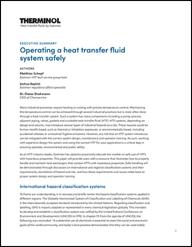
Operating a heat transfer fluid system safely
This whitepaper discusses global and local hazard classifications and underscores the need for safety compliance. It explores heat transfer fluid system related risks like thermal exposure, aspiration, toxicity, and environmental concerns, offering guidance for risk reduction through system design, maintenance, and operator training. Additionally, it stresses adherence to industry standards and regulations for operator and environmental safety.
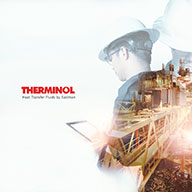
A practical guide to sustained heat transfer fluid performance
Did you miss our recent webinar in partnership with Chemical Engineering? Watch it now, and learn more about how to sustain the performance of your heat transfer fluid.
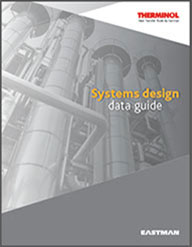
Therminol design guide—Systems design data guide
There are several things to consider when selecting components for heat transfer systems, many of which are listed in this guide. Find recommendations on piping system applications, various types of stem seal valves, how to minimize leaks from bolts and joints, proper installation of pumps and seals, and insulation designs to reduce fire hazards.
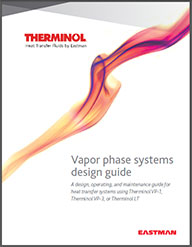
Therminol design guide—Vapor phase systems design guide
Eastman Therminol® vapor-phase heat transfer fluids are specifically designed to meet the demanding requirements of vapor phase systems. They combine exceptional heat stability and low viscosity for efficient, dependable, uniform performance. Physical characteristics of the heat transfer fluid should be considered in the general arrangement of any heat transfer system in which it is to be used. This document is a design, operating, and maintenance guide for heat transfer systems using Therminol VP-1, Therminol VP-3, or Therminol LT.
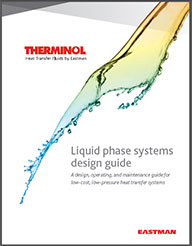
Therminol design guide—Liquid phase systems design guide
Every thermal fluid system is different. Operating temperatures, flow rates, process equipment, system components, and a host of other design details vary from system to system. But one thing remains constant: properly designed and operated heat transfer fluid systems are exceptionally reliable and economical. This guide is for assisting in the design, operation, and maintenance of liquid-phase heat transfer systems utilizing Therminol fluid.
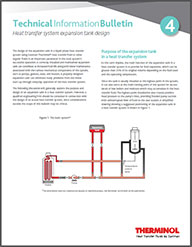
Therminol technical information bulletin—Heat transfer system expansion tank design
The design of the expansion tank in a liquid-phase heat transfer system using Eastman Therminol® heat transfer fluid or other organic fluids is an important parameter in the total system’s successful operation. A correctly installed and maintained expansion tank can contribute to increased fluid life along with lower maintenance associated with the various mechanical components of the system, such as pumps, gaskets, seals, and heaters.
Read more about how a properly designed expansion tank can eliminate problems.
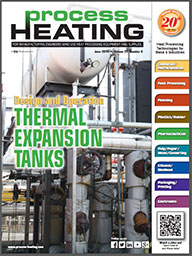
Process heating article—Thermal Expansion Tanks
A low-maintenance heat transfer fluid system can be provided via a properly designed and operated thermal expansion tank. What are the important considerations for a well-designed expansion tank?
Read more about thermal expansion tank design and operation.
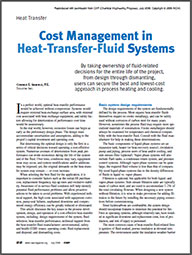
Chemical engineering article—Cost Management in Heat Transfer Fluid Systems
By taking ownership of fluid-related decisions for the entire life of the project, from design through dismantling, users can secure the best and lowest-cost approach in process heating and cooling.
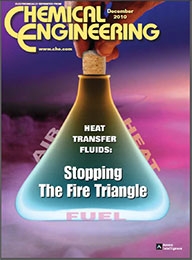
Chemical engineering article—Heat Transfer Fluid Leaks: Break the Fire Triangle
Extreme processing temperatures present the greatest risk. Know where leaks are most likely to occur and how to prevent them.

